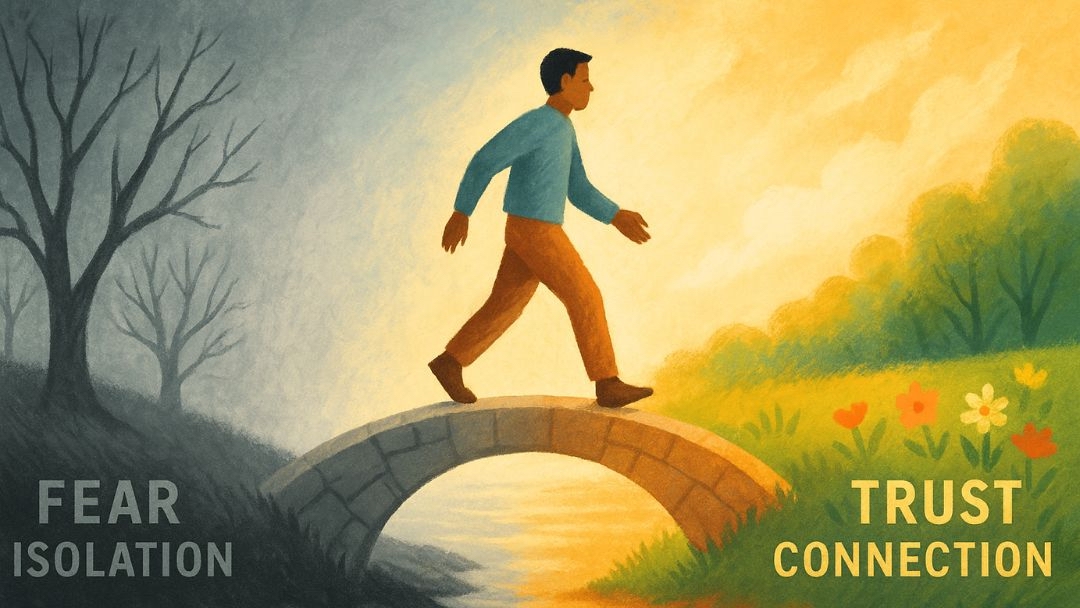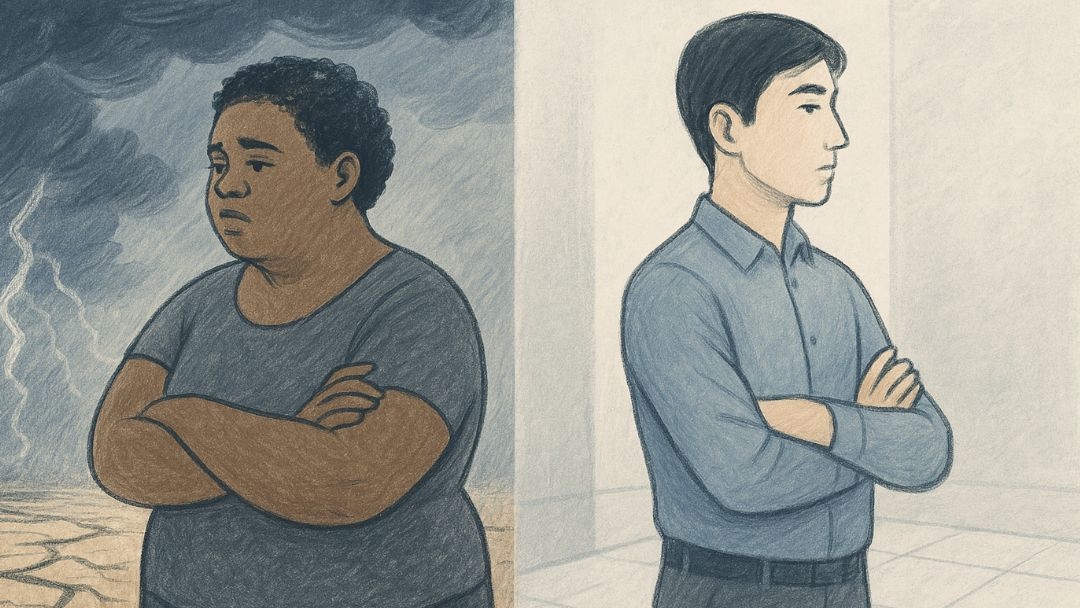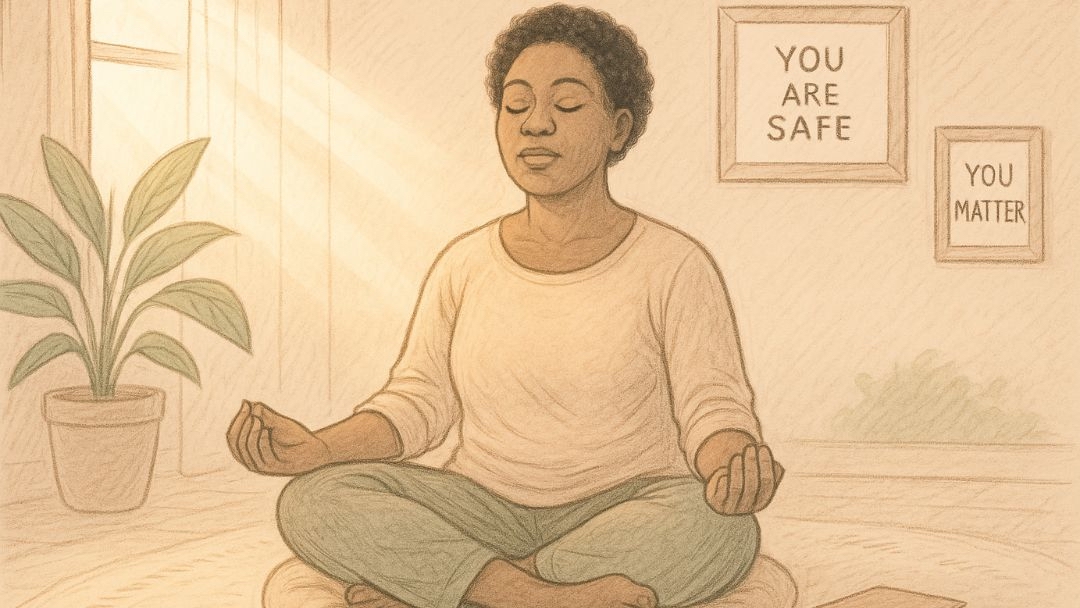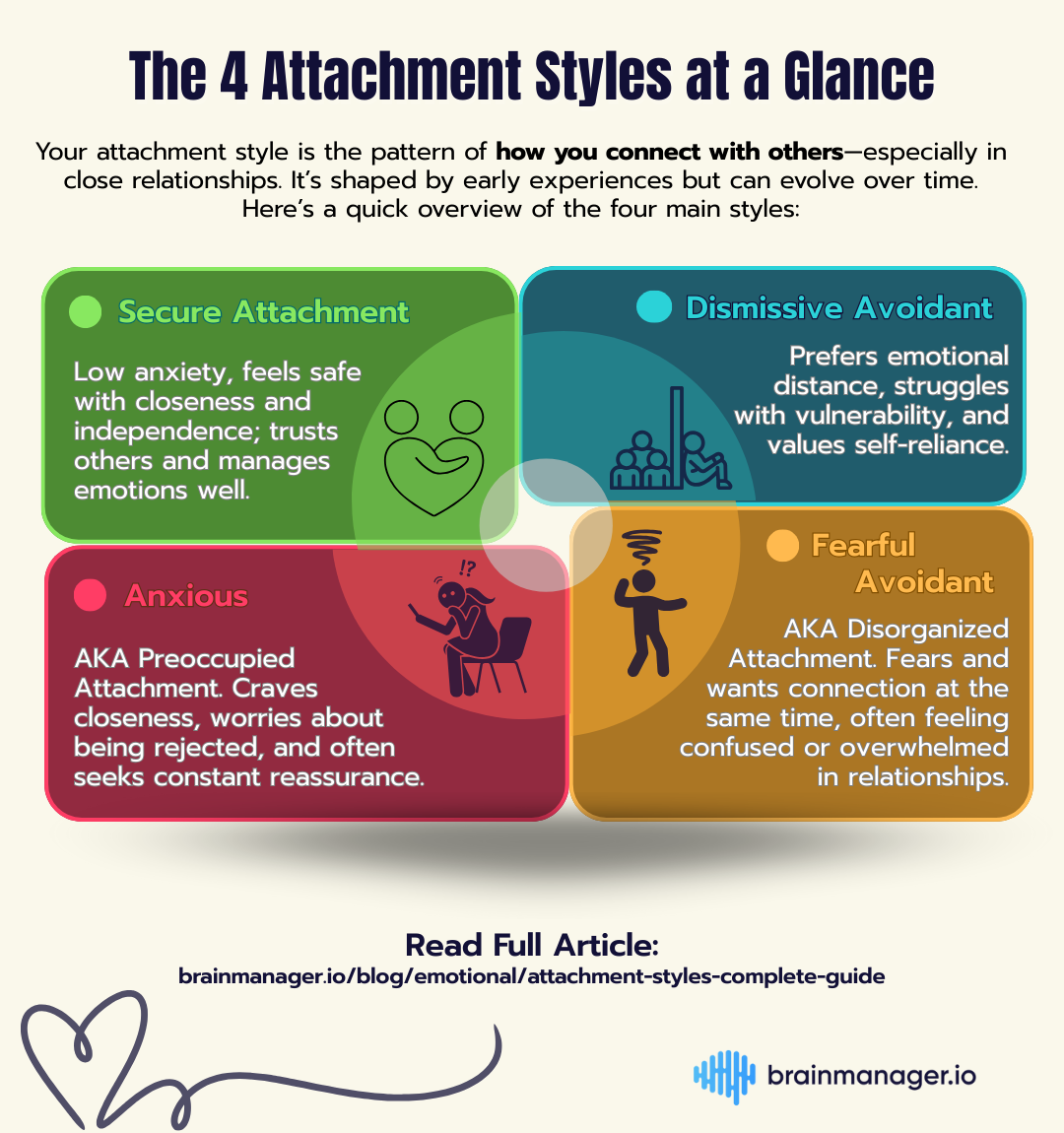Fearful-Avoidant vs. Dismissive-Avoidant: What Makes These Attachment Styles So Different?
Think all avoidants are the same? Not quite. Fearful-avoidants crave closeness but panic at the thought of rejection. Dismissive-avoidants shut down to protect their independence. Learn how to tell them apart—and why understanding attachment styles matters for healing and connection.


Back
7 mins read
Ever feel torn between wanting connection and fearing it—or know someone who seems totally fine flying solo, even in a relationship? You might be dealing with one of two avoidant attachment styles: fearful-avoidant or dismissive-avoidant. They may act similarly on the outside, but the emotional wiring underneath couldn’t be more different.
Understanding these insecure attachment patterns won’t just help you navigate relationships—it can help you better understand yourself. Here’s how to tell them apart, where they overlap, and why it matters.
Avoidant Attachment Theory At a Glance: Fearful vs Dismissive Styles

Before we explore how these two attachment styles play out in real life, it helps to understand how they fit within the bigger picture of attachment theory. In broad terms, people tend to form either secure or insecure attachment styles based on their early experiences with caregivers.
Securely attached individuals are generally comfortable with both closeness and independence. But when emotional needs aren’t met consistently in childhood, insecure patterns can develop. That’s where we get different insecure attachment styles like anxious, fearful-avoidant, and dismissive-avoidant.
The two avoidant styles we’re focusing on here—fearful and dismissive—can look similar on the surface, but they’re driven by very different emotional dynamics. Below, you’ll find a quick overview of each style, followed by a visual comparison to help you spot the core differences at a glance.
Fearful-Avoidant Attachment Style
Sometimes called disorganized attachment, the fearful-avoidant style is rooted in chaos or inconsistency—like growing up with caregivers who were loving one moment and rejecting the next. As adults, fearful avoidants crave intimacy but are terrified of getting hurt. It’s a constant push-pull dynamic: they long to be close, then pull away out of fear or self-protection. Underneath it all, there’s often low self-esteem and a deep fear of abandonment.
Dismissive-Avoidant Attachment Style
Dismissive avoidants learned early on that relying on others wasn’t safe. So, they stopped trying. These are the hyper-independent types who value space over connection and rarely show vulnerability. They tend to avoid emotional intimacy—not because they don’t have feelings, but because they’ve trained themselves to ignore them. Relationships can feel like a threat to their autonomy, so they keep people at arm’s length, even when they care.
Fearful-Avoidant vs Dismissive-Avoidant: Quick Comparison
Fearful and dismissive avoidants may both avoid emotional closeness—but for very different reasons. The table below highlights the key ways they differ in emotional patterns, coping styles, and relationship behavior.
Now that you’ve seen the side-by-side breakdown, let’s take a closer look. These styles often overlap in behavior—but the emotional drivers underneath tell a much more nuanced story. We’ll start with what they have in common.
Similarities Between Fearful-Avoidant and Dismissive-Avoidant Styles

Even though very different emotional needs drive fearful and dismissive avoidants, their behaviors in relationships often look surprisingly similar. That’s because both styles are rooted in early childhood experiences where emotional safety and consistency were missing. As a result, they developed self-protective strategies that center around distance, distrust, and emotional control.
If you’ve ever felt confused by someone who both needs you and pushes you away—or shuts down even when things seem fine—understanding these shared traits can bring some clarity.
Here are the patterns that fearful and dismissive avoidants tend to have in common:
- Trust issues: Both tend to assume others will let them down. Once trust is broken—even slightly—it’s hard to repair.
- Discomfort with emotional intimacy: Vulnerability feels threatening, so they may keep things surface-level or emotionally withdraw when it gets too real.
- Avoidance as a coping strategy: When overwhelmed, both retreat inward—disconnecting from others or their own emotions as a form of protection.
- Negative view of relationships: They may see relationships as risky, unreliable, or emotionally draining—though for slightly different reasons.
- Desire to be alone: Both prefer emotional independence. Depending on others feels unsafe, so they often choose to handle things on their own.
- Post-breakup patterns: People with avoidant attachment styles often remain emotionally distant or inconsistent even after a breakup. This can make closure hard, especially when you're dealing with fearful avoidant exes or a dismissive avoidant ex.
Lookalikes: Why Avoidant Attachment Often Gets Misread
Not only can fearful-avoidant and dismissive-avoidant styles be confused with each other, but they’re also often mistaken for certain personality traits or mental health conditions. On the surface, both styles may come across as emotionally distant, highly independent, or reluctant to connect deeply. That’s why people sometimes label avoidants as introverts, lone wolves, or even sigma types.
They can also be confused with social anxiety, especially when someone avoids eye contact, pulls back in group settings, or overthinks emotional interactions. But while social anxiety is rooted in a fear of judgment, avoidant attachment styles are often more about emotional protection in close relationships—not social situations in general.
It’s also important to distinguish avoidant attachment from Avoidant Personality Disorder (AvPD), which is a more severe and persistent clinical diagnosis. While AvPD can overlap with traits of fearful-avoidant attachment—like chronic withdrawal or fear of rejection—it involves deeper patterns of self-doubt, social inhibition, and sensitivity to criticism. It often requires professional treatment and support.
Recognizing these surface similarities helps explain why avoidant behaviors can be so misunderstood. But to truly understand these styles—and work toward healthier relationships—we need to look beyond what they have in common and focus on what sets them apart.
Related: 7 Signs of Emotional Unavailability in a Partner
Fearful Avoidant vs. Dismissive Avoidant: Key Differences

Relationships with fearful-avoidant or dismissive-avoidant partners often feel confusing, unstable, or emotionally distant—but for very different reasons.
Dismissive avoidants tend to keep their partners at arm’s length, offering little emotional connection and often shutting down during conflict. Fearful avoidants, by contrast, may swing between intense neediness and emotional withdrawal—creating a push-pull dynamic that leaves both people on edge.
While both styles struggle with connection, they do so for different reasons. Here's how they differ when it comes to intimacy, communication, and emotional behavior:
Fear of Intimacy
Both styles struggle with closeness, but for opposite reasons. Fearful avoidants crave connection yet fear getting hurt, which leads to emotional whiplash—wanting intimacy one moment and avoiding it the next. Dismissive avoidants avoid intimacy altogether, seeing it as a threat to their independence or control.
Relationship Expectations
Fearful avoidants long to feel wanted, secure, and emotionally reassured—but often expect betrayal or abandonment. Dismissive avoidants want space and autonomy. They expect partners to meet their own emotional needs and not lean too heavily on them.
Approach to Relationships
Fearful avoidants tend to bounce between chasing connection and protecting themselves from it, often sabotaging relationships out of fear. Dismissive avoidants usually avoid emotionally demanding relationships altogether, opting for casual or more surface-level bonds.
Communication Style
Dismissive avoidants withdraw—physically and emotionally—when overwhelmed. They rarely talk about feelings and may close up even more during conflict. Fearful avoidants, on the other hand, may become anxious or reactive when things feel unclear. They crave honesty and reassurance but may come across as intense or mistrustful when their needs aren’t met.
Boundaries
Dismissive avoidants set firm boundaries—often to protect themselves from feeling vulnerable or emotionally dependent. Fearful avoidants struggle to set boundaries at all. They may give too much, then lash out when they feel taken for granted or emotionally unsafe.
Emotional Expression
Dismissive avoidants tend to minimize their feelings and may use humor or distraction to avoid depth. They keep their emotional world private. Fearful avoidants often express emotions in extremes—fluctuating between intense closeness and sudden withdrawal, driven by insecurity and fear of rejection.
Not Sure Which One You’re Dealing With? Here’s How to Tell

Whether you’re trying to understand yourself or someone close to you, it’s easy to confuse fearful-avoidant and dismissive-avoidant behaviors. They can both look like emotional distance, avoidance, or shutdown—but the emotional drivers underneath are completely different.
Here are a few simple ways to tell them apart:
1. Do they seem torn—or just uninterested?
Fearful avoidants often show mixed signals: they want closeness but get overwhelmed and pull away.
Dismissive avoidants tend to consistently avoid depth and don’t seem emotionally conflicted about it.
2. Do they worry about being rejected—or seem fine alone?
Fearful avoidants fear abandonment and often assume they’ll be hurt.
Dismissive avoidants are more likely to assume they don’t need anyone at all.
3. How do they act during conflict?
Fearful avoidants may get emotional, anxious, or reactive—especially if they feel ignored or betrayed.
Dismissive avoidants typically shut down, become silent, or physically withdraw.
4. Do they open up eventually—or stay emotionally closed off?
Fearful avoidants might share, but it often comes with intensity or fear.
Dismissive avoidants tend to keep their emotional world private and rarely offer vulnerability.
5. Does their behavior feel confusing—or distant?
Fearful avoidants leave people guessing: they pull close, then push away.
Dismissive avoidants leave people feeling shut out from the start.
When It Might Be Something Else
Sometimes what looks like an avoidant attachment style is actually something else entirely. These traits or conditions can mimic avoidant behavior on the surface—but the motivations underneath are very different.
Introvert
Introverts enjoy solitude and recharge best on their own. They may seem reserved, but they typically feel comfortable with emotional closeness in safe relationships.
Practical Sign: They enjoy meaningful one-on-one conversations, even if they avoid big groups.
Lone Wolf
Lone wolves prefer full independence—not just emotionally, but socially and logistically. They often choose solitude as a lifestyle, not out of fear or insecurity.
Practical Sign: They genuinely feel happiest doing things alone and rarely seek out close connection.
Sigma Personality
Sigma types are often confident, self-contained, and nonconforming. Their independence isn’t defensive—it’s deliberate. They may resist dependence but aren't emotionally closed off.
Practical Sign: They set boundaries clearly but can be warm or open if they respect you.
Social Anxiety
People with social anxiety worry about being judged or embarrassed in social settings. Their avoidance isn’t about emotional closeness—it’s about how they’ll be perceived.
Practical Sign: They may overthink casual interactions or avoid group events but still crave acceptance.
Anxious Attachment
Anxiously attached individuals crave closeness and constantly fear being abandoned. They may seek constant reassurance and feel insecure in relationships—but they don’t withdraw emotionally like avoidants do.
Practical Sign: They’re more likely to text excessively, feel hurt by slow replies, or panic if they sense emotional distance.
Avoidant Personality Disorder (AvPD)
AvPD involves deep fear of rejection, low self-worth, and chronic social withdrawal. It most closely overlaps with fearful-avoidant but is more severe and long-lasting.
Practical Sign: Even when they want connection, they avoid it to the point that it severely impacts daily life.
Borderline Personality Disorder (BPD)
BPD and fearful-avoidant attachment can both involve emotional intensity and fear of abandonment. But BPD often includes impulsivity, identity struggles, and unstable self-image—going beyond relational patterns.
Practical Sign: Their mood, self-image, and relationships may shift rapidly, with a pattern of extremes.
Conclusion: Fearful or Dismissive Avoidant—You’re Not Stuck This Way

Fearful and dismissive avoidants may share a tendency to pull away from closeness, but the reasons behind that behavior couldn’t be more different.
Understanding these differences isn’t just helpful—it’s empowering. It gives you the tools to better navigate your relationships and show up for yourself with more clarity and compassion. These patterns often come from early experiences—things you didn’t choose. But awareness gives you a choice now.
Over time, with the right support, it’s possible to move toward a more secure attachment and way of connecting—one that feels safe, steady, and honest.
You don’t have to do it alone. Working with a therapist or even learning more about your attachment style can be the first step toward that change.
Healing takes effort, but it also leads to love that’s mutual, grounded, and real.
Judith Akoyi
Content Writer
Published 12 May 2025





